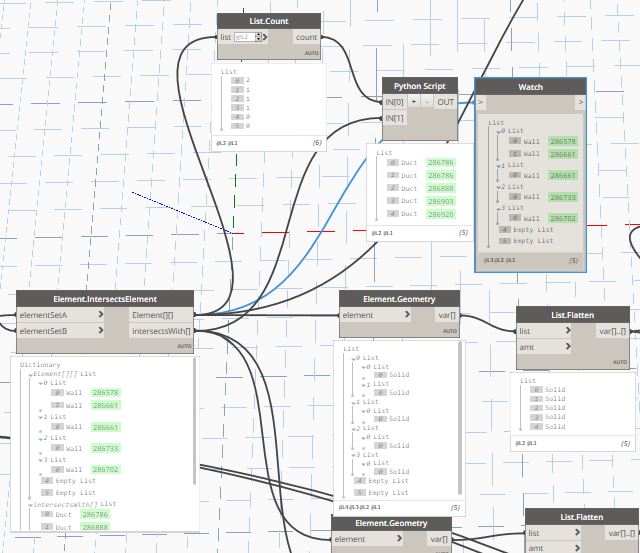Hello,
I’ll try to explain my problem the most simple way 
I have a list of WALLS with ID.
I transform those walls elements into geometry and I intersect them with another geometry.
So far, no problem.
If I have 1 wall intersecting with 1 object, then I have as a result a solid corresponding to my wall id list.
But if I have a wall intersecting 2 elements, then I have as a result 2 solids. Then my solid results is not correspond to my wall id list. I’ll need to have 2x this wall id in my first wall id list to correspond with my solid results.
Do you have any idea how I can achieve this ?
For example, in the picture below, I have 8 walls and 10 solids as results.
I want to associate each solid to a wall in order to have a list of 10 Walls (some of them will have the same id).
I have this information : Element.Geometry is giving me 8 solids, which are corresponding to my wall id list.
But when I use Geometry.intersect (with vectorial product) I get more solid than number of walls.
Am I clear ? Don’t hesitate to ask me more question about it.
My idea is to extract data from Geometry.intersect to identify how many solids get created for evert wall, then have a list with these wallsResa_V4_Help.dyn (62.0 KB)

